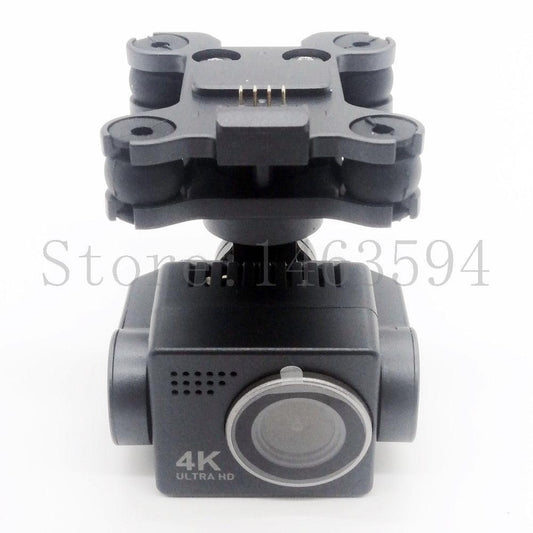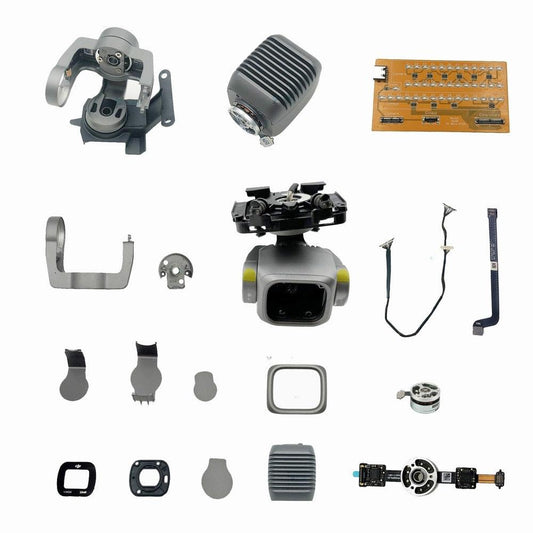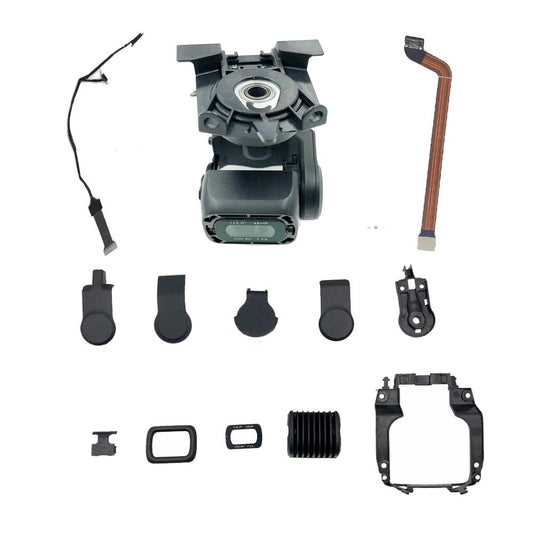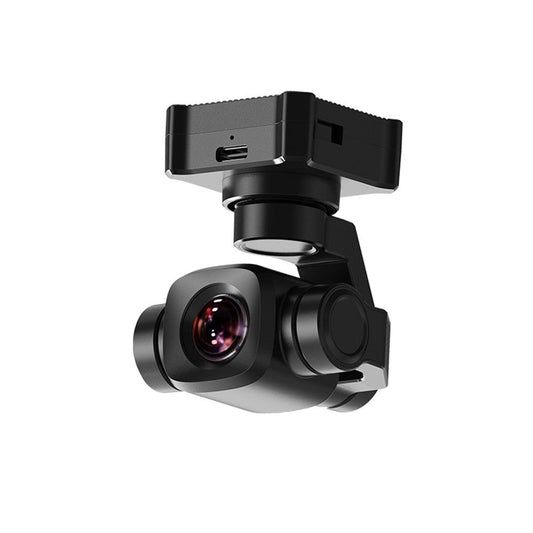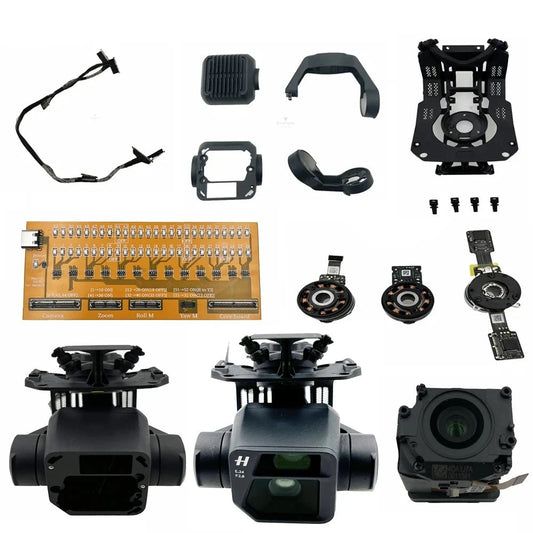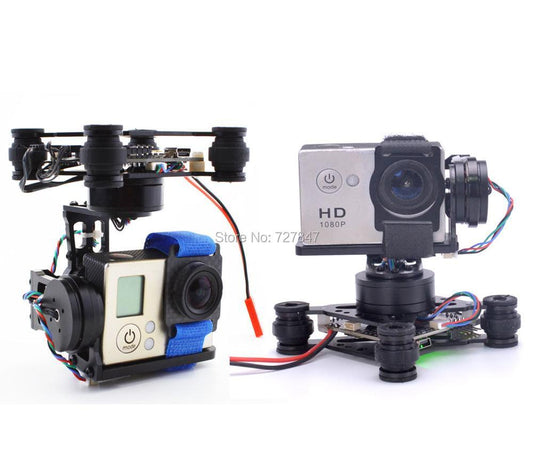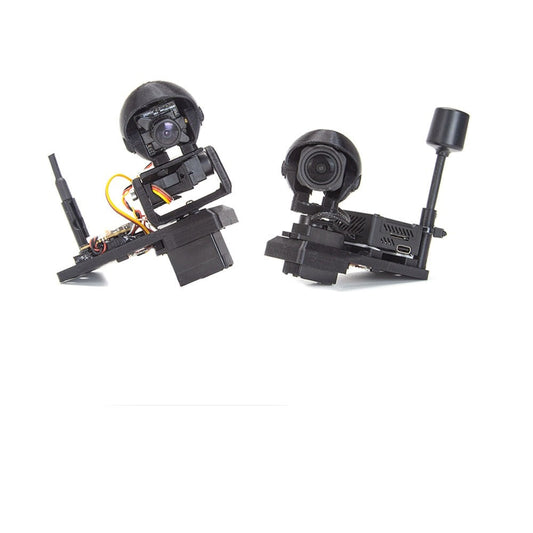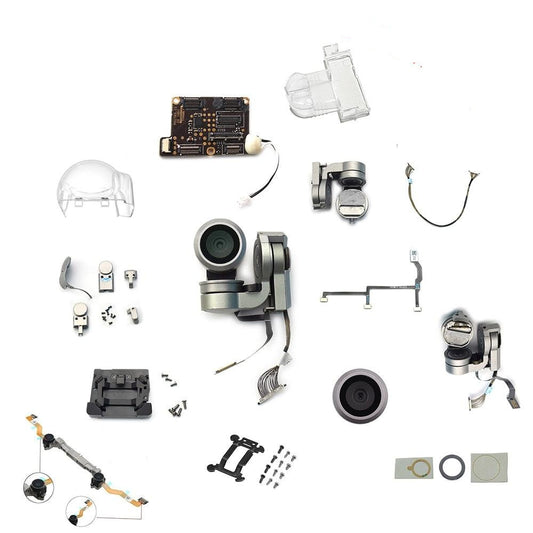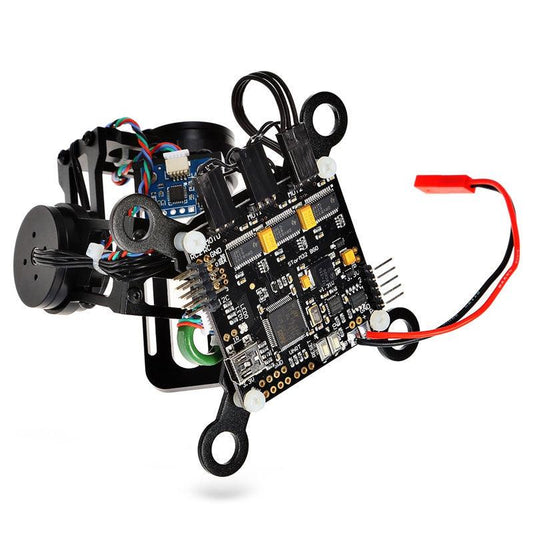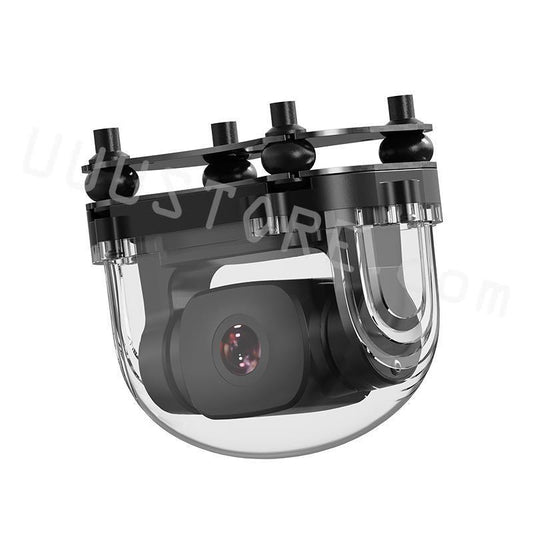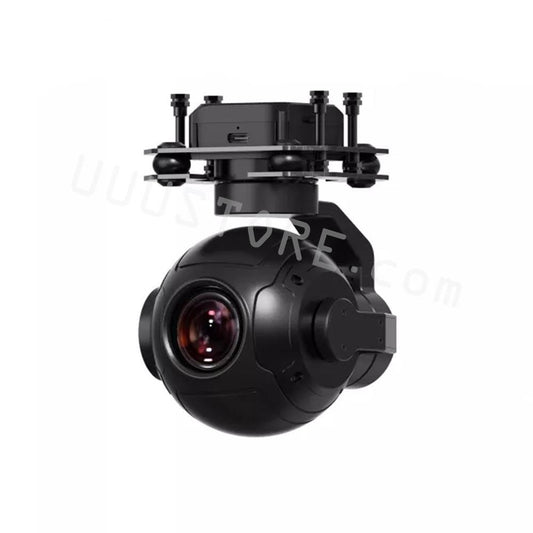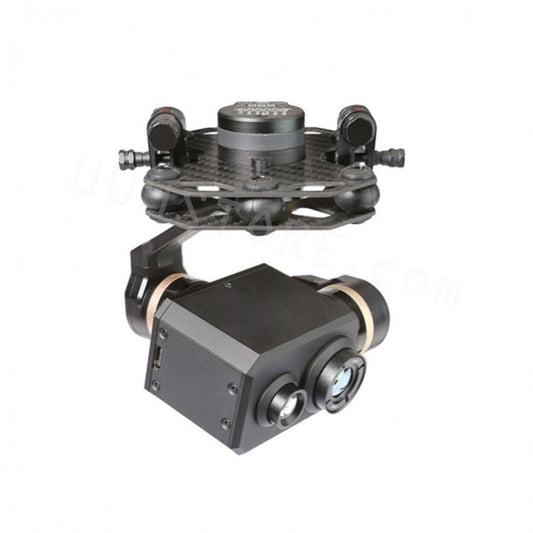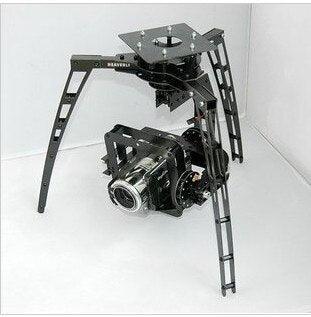Drone Gimbal Camera Type
-

Thermal Camera Gimbals
Explore the Thermal Camera Gimbals Collection, designed for professional UAV applications requiring...
-

Night Vision Gimbal Cameras
The Night Vision Gimbal Cameras Collection features cutting-edge payloads from top brands...
-

Starlight Gimbal Cameras
The Starlight Gimbal Cameras Collection showcases advanced imaging systems from trusted brands...
-

Laser Range Finder
This collection features advanced Laser Range Finder (LRF) modules and multi-sensor drone...
-

Gimbal for Gopro
The Gimbal for GoPro Collection offers a diverse range of 2-axis and...
-

Gimbal Parts
The Gimbal Parts Collection offers a comprehensive selection of repair parts and...
Drone Gimbal Camera Brand
-

Zingto Camera Gimbal
Zingto Camera Gimbal features advanced drone camera pods designed for a variety...
-

Tarot Drone Gimbal
The Tarot Drone Gimbal collection offers high-precision 2-axis and 3-axis brushless gimbals...
-

XF Drone Pod / Gimbal Camera
The XF Drone Pod / Gimbal Camera collection showcases XF ROBOT TECHNOLOGY’s...
-

SIYI Gimbal
The SIYI Gimbal collection brings precision and innovation to drone imaging. The...
-

Skydroid Gimbal
The Skydroid Gimbal collection features high-precision 3-axis stabilized camera gimbals designed for...
-

Deepthink UAV Payloads
The Deepthink UAV Payloads collection offers AI-powered night vision and multi-sensor gimbal...
-

CZI Drone Payloads
The CZI Drone Payloads collection offers high-performance gimbal cameras, searchlights, loudspeakers, and...
-

DJI Gimbal
DJI Gimbal Parts & Camera Gimbals Collection Keep your DJI drone stable...
-
SJRC F7 4K PRO F7S Folding Drone Spare Parts Spare Parts 4K HD Wifi camera with 3-axis gimbal
Regular price $110.79 USDRegular priceUnit price per -
Genuine Gimbal Parts for DJI Air 2S - Gimbal YR Motor with Yaw Roll Arm Assembly Camera Frame with Pitch Motor Cover Cap PTZ Cable
Regular price From $9.84 USDRegular priceUnit price per -
Skydroid C12 Drone Gimbal - 2K 2560x1440 HD Camera, 7mm Lens 384x288 Thermal Imaging Camera With 3-Axis Stabilized Gimbal
Regular price $499.00 USDRegular priceUnit price per -
SIYI ZT6 Mini Dual Sensor Optical Pod - 4K Ultra HD Camera + 13mm 640x512 Thermal Imaging Camera Gimbal for Drone Surveillance
Regular price $3,094.97 USDRegular priceUnit price per -
XF C-20T 3 Axis FPV Gimbal HeadTracker
Regular price From $49.00 USDRegular priceUnit price per -
Gimbal Parts for DJI Mavic Air 2 - Gimbal Camera Motor Side/Back Cover Cap Set Lens Glass Ring Signal Flexible Cable (Used )
Regular price From $9.70 USDRegular priceUnit price per -
SIYI A8 Mini 4K 8MP Ultra HD 6X Digital Zoom Gimbal Camera with 1/1.7" Sony Sensor 95g Lightweight Special use for UAV pictures
Regular price $346.58 USDRegular priceUnit price per -
Genuine Gimbal Parts for DJI Mavic 3/CINE - Yaw/Roll Arm/Motor Camera Ptz Signal Cable Damper Board Bracket Spare Parts In Stock
Regular price From $12.81 USDRegular priceUnit price per -
CZI IR3 Infrared Laser Zoom Spotlight - 4W Power 300 Meters 35x Optical Zoom Infrared Gimbal for Matrice 30 Series
Regular price $2,399.00 USDRegular priceUnit price per -
RTF 3 Axis 3Axis Brushless Gimbal - / 2204 2208 140kv Motor / Storm32 Controlller for Gopro 3 Runcam 3 Walkera X350
Regular price $73.34 USDRegular priceUnit price per -
SIYI A2 Mini Ultra Wide Angle FPV Gimbal - Single Axis Tilt with160 Degree FOV 1080p Starlight Camera Sensor IP67 Waterproof
Regular price From $122.32 USDRegular priceUnit price per -
XF C-20T 3-Axis FPV Gimbal with Non-Orthogonal Stabilization for DJI O3 and Analog Cameras
Regular price From $119.00 USDRegular priceUnit price per -
TOPOTEK KIT10C 4-Light Drone Gimbal - DUAL VISIBAL +640THERMAL+1800M LR FOUR LIGHT GIMBAL
Regular price $8,499.00 USDRegular priceUnit price per -
SIYI ZT30 Optical Drone Pod - 3-Axis Four Sensors Gimbal, 4K 30X Optical Zoom Camera, 640 x 512 Thermal Imaging, 2K Ultra-Wide Angle, 1200M Laser Rangefinder
Regular price $7,089.00 USDRegular priceUnit price per -
ATOMRC 1 Axis 2 Axis Gimbal - Hi-Resolution Wide Angle Range Gimbal with Servo for FPV Airplane Fixed Wing for RC Model
Regular price From $35.87 USDRegular priceUnit price per -
RTF 3 Axis 3Axis Brushless Gimbal - / 2204 2208 140kv Motor / Storm32 Controlller for Gopro 3 4 Runcam3 Walkera X350 Xiaomi SJ4000
Regular price From $38.27 USDRegular priceUnit price per -
3 Axis Gimbal Storm32 BGC Lightweight Brushless Gimbal W/ Motors Free Debug 3-4S For Gopro3 Gopro4 SJ4000 Camera DIY FPV
Regular price From $59.40 USDRegular priceUnit price per -
Genuine Gimbal Mainboard Arm Motor Signal/Flat Cable Camera Lens/Frame Damper Board for DJI Mavic Pro Drone Repair Parts
Regular price From $8.66 USDRegular priceUnit price per -

Skydroid C13 Three-Light Drone Gimbal Camera: 5MP + 640x512 Thermal, 30x Zoom, 905nm LRF 1KM, 3-Axis
Regular price $1,799.00 USDRegular priceUnit price per -
TOPOTEK DIT30B Four-Sensor Drone Gimbal Camera with 30X Optical Zoom, 1080P EO, 640×512 IR Thermal Imaging, and 1800m Laser Range Finder
Regular price $8,999.00 USDRegular priceUnit price per -
TOPOTEK DHU290G609 Drone Gimbal Camera - 1080P Fixed Focus + 640×512 Thermal Imaging IP HDMI Dual Output
Regular price $5,398.00 USDRegular priceUnit price per -
XF Z-9A Drone Pod - 3-Axis Gimbal 30x Optical 4x Digital Zoom EO Camera, 25mm 640 IR Thermal, 1.8KM LRF, 200M Laser Lighting
Regular price $13,599.00 USDRegular priceUnit price per -
ViewPro GS-100C UAV Laser Lidar Scanning System with 24MP Camera for Drone 3D Mapping and Surveying
Regular price $9,999.00 USDRegular priceUnit price per -
ViewPro A609R Ultra-Compact Triple-Sensor 3-Axis EO/IR & LRF Gimbal Camera for UAV Drone
Regular price $4,499.00 USDRegular priceUnit price per -
Skydroid C20 Drone Gimbal - 22X Zoom 1080P 2MP Camera Three-Axis Night Vision Gimbal
Regular price $549.00 USDRegular priceUnit price per -
TOPOTEK KHP415S90 Dual Light Drone Gimbal - 7x Digital Zoom 4K Camera + 9x Digital Zoom 1080P Camera 3-Axis Stabilized Gimbal
Regular price $799.00 USDRegular priceUnit price per -
TOPOTEK KHY10S90 Drone Gimbal Camera - 10x Optical zoom IRCUT 3-Axis Gimbal camera, IP/HDMI output
Regular price $559.00 USDRegular priceUnit price per -
TOPOTEK KIY10S4K Camera Gimbal - 4K Resolution 10x Optical Zoom 3-Axis PTZ Small Gimbal for UAV Drone
Regular price From $999.00 USDRegular priceUnit price per -
QX-MOTOR Storm32 3 Axis RC Drone FPV Accessory Brushless Motors & 32 bit Storm32 Controlller for Gimbal Gopro3 / Gopro4
Regular price $81.23 USDRegular priceUnit price per -
SIYI A2 mini Ultra Wide Angle FPV Gimbal Single Axis Tilt with160 degree FOV 1080p Starlight Camera Sensor IP67 Waterproof
Regular price From $124.65 USDRegular priceUnit price per -
Tarot Metal 3 Axis Gimbal Efficient FLIR Thermal Imaging Camera CNC Gimbal TL03FLIR for Flir VUE PRO 320 640PRO F19797
Regular price $253.17 USDRegular priceUnit price per -
SIYI ZR10 2K 4MP QHD 30X Hybrid Zoom Gimbal Camera with 2560x1440 HDR Night Vision 3-Axis Stabilizer Lightweight for quadcopter
Regular price $649.89 USDRegular priceUnit price per -
Tarot TL3T21 3-Axis Brushless Gimbal 640*512 Thermal Imaging Camera & Visible Light Camera 3-6S Input S-Bus PWM Receiver
Regular price $3,206.71 USDRegular priceUnit price per -
Three-axis Synchronous Belt Drive Glass Fiber Pan/Tilt Camera Mount PTZ + 3 GS-9257MG Servo
Regular price $209.32 USDRegular priceUnit price per -
RTF CNC Lightweight 2 Axis Brushless Gimbal Board Framewith Sensor Debug for Gopro 3 4 Hero 5 6 Gopro Session SJ4000 Camera
Regular price $53.80 USDRegular priceUnit price per -
2-AXIS 2 Axis Brushless Gimbal - / 2805 80KV Motor / BGC Controller Board Black for WK QR X350 SJ4000 Gopro3 4 Gopro Hero
Regular price $52.54 USDRegular priceUnit price per














